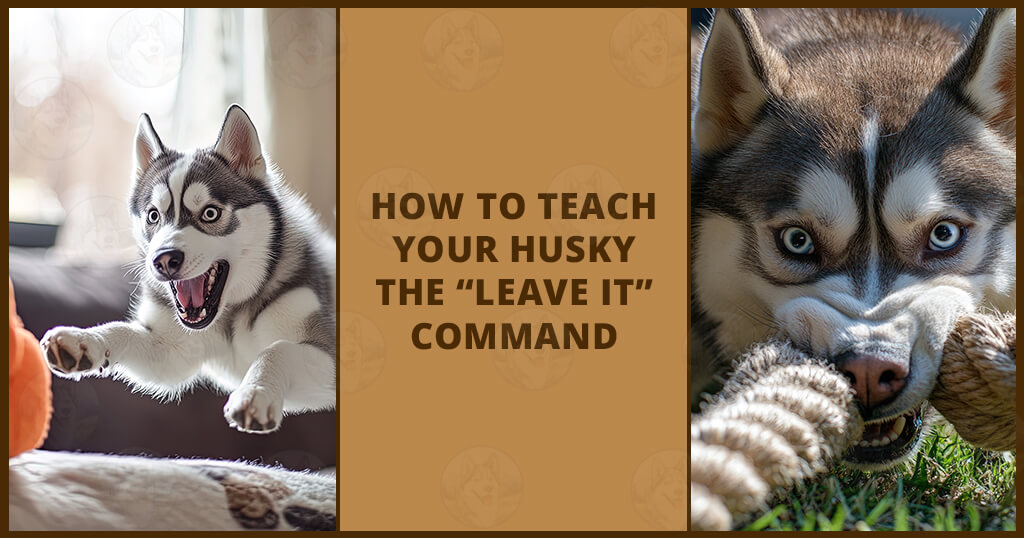Learn how to train your Siberian Husky the “Leave It” command with this step-by-step guide. Build impulse control, improve safety, and strengthen your bond.
How to teach your Husky the “Leave it” command
Training your Siberian Husky to follow the “Leave it” command is one of the most valuable things you can teach them. This skill helps prevent your Husky from eating dangerous objects, chasing wildlife, or getting into trouble during walks. For Huskies, the intelligent, stubborn, and full of energy breed, “Leave it” also develops impulse control and reinforces your leadership.
Why the “Leave it” command is essential for Huskies
Siberian Huskies are curious by nature and often follow their instincts without hesitation. A reliable “Leave it” can:
- Stop them from eating harmful food or objects.
- Prevent dangerous interactions with other animals.
- Reduce pulling toward distractions.
- Improve focus on walks.
- Strengthen your bond through trust and consistency.
Because Huskies are independent thinkers, this command requires patience, repetition, and creativity.
Step-by-step: how to train your Husky “Leave it” command
1. Start indoors with low-value treats
- Setup: Use two types of treats: low-value (dry kibble) and high-value (chicken, cheese, or a favorite snack).
- Hold a low-value treat in your closed hand. Let your Husky sniff or paw at it without giving it to them.
- The moment they back off or look away, mark the behavior (“Yes!” or click) and reward with the high-value treat from your other hand.
Tip: Let your Husky figure out the connection. They’ll learn that ignoring one thing earns something better.
2. Add the “Leave it” cue
Once your Husky understands the exercise:
- Say “Leave it” once before presenting the low-value treat in your closed hand.
- Wait for them to ignore it or look at you.
- Mark the moment and reward from the other hand.
Important: Avoid repeating the cue multiple times. Clear, single cues speed up learning.
3. Progress to open-hand practice
- Place the treat in your open palm.
- If your Husky tries to grab it, close your hand immediately.
- Reward only when they wait or give you eye contact.
- Gradually increase how long your hand stays open.
4. Move the treat to the floor
- Place the treat on the floor and cover it with your hand or foot.
- Use the “Leave it” cue.
- When your Husky backs off, reward from your other hand.
- Over time, uncover the treat while maintaining control.
5. Increase difficulty with real-life distractions
Huskies often behave perfectly indoors but forget outside. To make “Leave it” reliable:
- Practice in the yard with toys, sticks, or low-value treats.
- Drop something on a sidewalk during a walk and use the cue.
- Work your way up to high-distraction areas like parks.
Always keep your Husky on a leash during these exercises, especially when other animals are involved.
Common Husky training challenges (and fixes)
1. Stubbornness
If your Husky ignores the cue, block access to the object, reset, and make the next attempt easier so they succeed.
2. Boredom
Keep sessions short (5–10 minutes), use different rewards, and mix training with play.
3. Overexcitement Outside
Train after exercise when your Husky is calmer for better focus.
Everyday uses of “Leave it” for Huskies
- Avoiding toxic foods like grapes, onions, or chocolate.
- Dropping dangerous items like sharp sticks or glass.
- Preventing lunges at cats, squirrels, or birds.
- Redirecting from unfriendly dogs.
Keeping the “Leave it” command strong
- Random practice during meals, play, or walks.
- Gradually increase challenge levels over time.
- Ensure all family members use the same cue and reward rules.
Final thoughts on “Leave it” training command
The “Leave it” command is more than just obedience, it’s a safety tool and trust exercise. For Huskies, who thrive on independence, it’s also a way to channel their energy into making the right choice.
Start small, keep it positive, and practice regularly in different environments. With consistency and patience, your Husky will learn that ignoring temptation leads to better rewards, and you’ll have one of the most reliable commands in your training toolkit.

